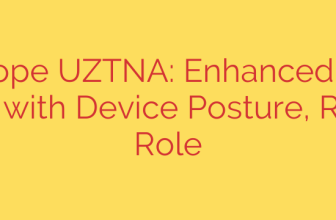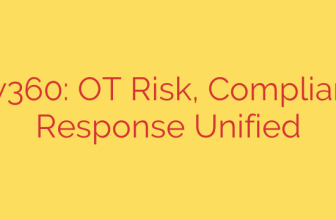
AI in Space: Navigating the New Frontier of Cybersecurity Threats
The new space race is here, but it’s not just about reaching distant planets. It’s about deploying vast constellations of intelligent satellites that power our global communications, navigation, and earth observation systems. At the heart of this revolution is Artificial Intelligence, enabling unprecedented levels of autonomy and data processing in orbit. However, with these advanced capabilities comes a new and formidable set of security challenges. Securing our space-based AI assets is no longer a future problem—it is an immediate and critical necessity.
As satellites become more like flying data centers, traditional cybersecurity measures are no longer enough. We must build resilient security architectures designed specifically for the unique threats and hostile environment of space.
The Double-Edged Sword: AI’s Role in Modern Space Operations
AI and machine learning are indispensable for modern space missions. They are used for:
- Autonomous Navigation: Enabling satellites to independently maintain their orbits, avoid collisions with debris, and coordinate within large constellations.
- Onboard Data Processing: Analyzing vast amounts of sensor data in real-time, sending back only the most critical information to reduce bandwidth strain.
- Predictive Maintenance: Monitoring system health to anticipate and flag potential hardware failures before they become critical.
- Intelligent Communication: Optimizing signal routing and managing network traffic across complex satellite networks.
While these capabilities are transformative, they also introduce new attack vectors. Hackers are no longer just targeting ground stations; they are setting their sights on the intelligent systems operating hundreds of miles above Earth.
New Vulnerabilities in Orbit: The Threats to Space-Based AI
An AI system is only as reliable as the data it’s trained on and the integrity of its algorithms. In a space context, compromising an AI can have catastrophic consequences, from rendering a satellite useless to turning it into a weapon. The primary threats include:
- Adversarial Attacks: This involves feeding a system intentionally manipulated data designed to confuse it. For example, an adversary could transmit a slightly altered image to a satellite’s optical sensor, causing its AI to misidentify a target or ignore a threat. These manipulations are often invisible to the human eye but can completely fool an AI model.
- Data Poisoning: A more insidious attack where malicious data is secretly introduced into the AI’s training set on the ground. This can create a hidden backdoor or a built-in flaw that an attacker can later exploit once the system is in orbit. The AI might learn to ignore a specific type of signal or classify a hostile spacecraft as friendly.
- Model Inversion and Extraction: Attackers may attempt to “interrogate” an AI model to reverse-engineer it. By analyzing its outputs, they can potentially reconstruct the sensitive data it was trained on or steal the proprietary algorithm itself, a form of high-tech intellectual property theft.
Building a Resilient AI Security Architecture for Space
Protecting AI in space requires a multi-layered, defense-in-depth strategy. This isn’t about a single piece of software but a comprehensive architecture that integrates security into every phase of a mission’s lifecycle.
The cornerstone of this modern approach is the Zero Trust framework, which assumes no actor or system is inherently trustworthy. Every command, data packet, and request must be authenticated and authorized, whether it originates from a ground station or another satellite in the same constellation.
Furthermore, AI itself is a powerful defensive tool. Security architects are deploying AI-driven systems for:
- Intelligent Anomaly Detection: Onboard AI can monitor a satellite’s operations and communications in real-time, instantly identifying unusual patterns that could indicate a cyberattack, jamming, or spoofing attempt.
- Autonomous Threat Response: When a threat is detected, a properly architected AI can take immediate, independent action to isolate affected systems, switch to backup communication channels, or enter a safe mode, all without waiting for commands from Earth.
- Predictive Threat Intelligence: By analyzing global communication patterns and known adversary tactics, AI on the ground can predict potential attacks on space assets, allowing operators to proactively update security protocols.
Actionable Security Measures for Space Systems
To create a truly secure environment for AI in orbit, operators and developers must prioritize a few key practices:
- Implement Robust Data Verification: Before any data is used for training or onboard decision-making, it must be rigorously vetted and authenticated. Ensuring the integrity of data from the ground up is the first line of defense against poisoning attacks.
- Deploy Resilient and Explainable AI (XAI): Use AI models that are specifically designed to be robust against adversarial attacks. Furthermore, deploying “Explainable AI” helps operators understand why a model made a specific decision, making it easier to spot anomalous or malicious behavior.
- Secure Over-the-Air (OTA) Updates: The ability to patch and update software in orbit is crucial. These update channels must be heavily encrypted and authenticated to prevent attackers from pushing malicious code to a satellite.
- Adopt a Layered Defense Strategy: Rely on a combination of encryption, network segmentation, authentication protocols, and AI-powered monitoring. If one layer is breached, others must be in place to contain the threat.
The future of global commerce, science, and security is inextricably linked to the assets we place in orbit. As we delegate more autonomy to AI in this critical domain, we must engineer security architectures that are as sophisticated and resilient as the systems they are designed to protect. The safety of our final frontier depends on it.
Source: https://www.helpnetsecurity.com/2025/10/08/centralized-vs-decentralized-security-space/








